Your login information returned multiple users. Please select the user you would like to log in as and re-type in your password.

It takes a lot for an independent third party developer to set the world on fire these days and more so if your game exists within a genre that has been, quite literally, done to death. Three and a half years ago, developer Techland was able to do just that with Dead Island thanks to a trailer depicting the violent death of a little girl and her family played in reverse and set to some somber piano music. Despite being the biggest commercial success, the game was of questionable quality thanks to very repetitive gameplay and one of the most boring stories of the generation. Dead Island had potential, to be sure, but it’s clear that Techland vision for an open world zombie game needed a significant adjustment.
Now, a little over a year on since the release of a new generation of hardware and when the zombie genre is seeing some of its greatest fatigue, Techland has unleashed their spiritual successor to its 2011 success with Dying Light, retaining Dead Island’s open world and melee combat-focused themes while throwing in parkour movement and a gameplay-changing day/night cycle. With so many people complaining of zombie fatigue these days though, does Techland’s latest deserve to be in the spotlight or should it just be left to rot in the dark?
Developer: Techland
Publisher: Warner Bros. Interactive Entertainment
Release date: January 27, 2015
Platform(s): Xbox One (Reviewed), PS4, PC
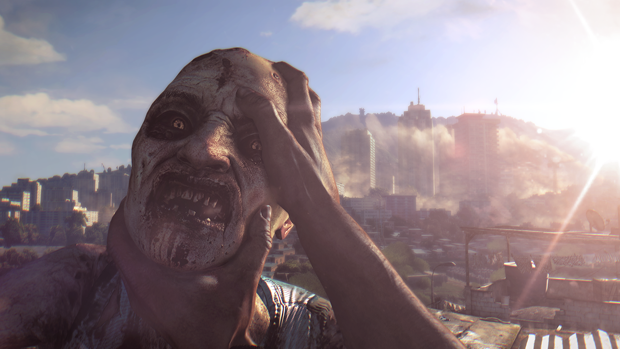
Dead By Dawn
For three months, the Turkish port city of Harran has been under military quarantine. Prior to the much-anticipated Global Athletic Games, an unknown virus has swept through the once prosperous town, turning most of the inhabitants into mindless, flesh-eating creatures. In the weeks that have followed, the Global Relief Effort has maintained a steady stream of aerial supply drops to support the remaining survivors trapped within the walls of the city. The rest of the world watches from afar as the government plans to firebomb Harran in the hopes of wiping out the infection in just a handful of days.
Enter Kyle Crane, a secret operative for the GRE. His mission: infiltrate the Harran quarantine zone, retrieve classified documents related to the virus and escape the city before the purge begins. Of course, just like you would expect: things go belly up from the moment he hits the ground. Ambushed by bandits, Crane unfortunately attracts the attention of the victims of the virus and becomes infected. Rescued by members of The Tower, one of the last remaining strongholds against the undead, Crane must secretly go about completing his objectives while aiding the survivors.
When it comes to open world zombie games, the production budget tends to be put much more into the actual creation of the world around the characters and events that unfold rather than the development of the story. Techland seems to be aware that one shouldn’t go into a project like this with high hopes for the narrative being the next The Last of Us and instead chose to develop Dying Light into a serious zombie story with bits of comedy thrown in to try and balance the edginess of the plot. This is almost a repeat of the same storytelling method used for Dead Island minus the stupidly goofy “Who Do You Voodoo Bitch” character writing the previous game suffered from. The plot of Dying Light clearly desires to be a strong B-action story but it is unfortunately downgraded significantly thanks to some very weak storytelling and plot decisions that will leave you wondering just what the developers were thinking.
Nowhere is this more apparent than when you take a look at the plot structure of Dying Light and how it interacts with the gameplay. The story itself makes almost no effort to acknowledge the deeds of the player in-game, leaving you with no ability to make a decision for yourself. Kyle Crane, while having a voice and opinions all to his own, isn’t offered any moments by which the player can shape the plot, instead taking you on a ride for which you are not offered any control. In addition, the game’s multitude of side quests and retrievables have no impact on the progression of the primary storyline despite implying consequences for the status of many of the game’s characters.
The biggest example of this failed interaction though comes from the game’s predominant MacGuffin device: Antizin. In the world of Dying Light, a cure has yet to be found for the Harran virus. In the meantime, the Global Relief Effort has synthesized a stopgap measure: a suppressant that, when taken regularly, will stabilize an infected person’s condition and prevent them from turning into a zombie. As one of the infected, much of the plot surrounds the acquisition of Antizin as the two primary factions of the game vie for control of the airdrops that supply the city with this life-saving serum. Theoretically, it should serve as not only one of the primary motivations for our infected protagonist but also as a gameplay rule like what Zombrex is to the infected in Capcom’s Dead Rising series. Instead, other than being mentioned as one of the necessities the survivors must seek out to keep from joining the undead populace, Antizin is relegated to being a useless plot device that only serves to connect separate storypoints. The player is never required to actually obtain Antizin in anything other than the main plot, nor can they outside of it. Instead, it is used as a reminder that the player is on the verge of turning into a flesh-eater by having Crane experience seizures at set points in primary story quests, visually represented by messing with the character’s vision in the same manner as malaria does to the protagonist in Far Cry 2, albeit without the actual gameplay consequences. It’s a big wasted opportunity for Dying Light and should have received far better integration into the story than what we see in the final product.
Antizin is one of the game’s biggest narrative failings but that doesn’t mean that it is alone in bringing down the quality of the story. In fact, the design of the characters themselves drags the story down as well. Kyle Crane has his own opinions and motivations for what he does throughout the story as previously mentioned but the way he expresses these through both dialog and action makes him appear to lack a whole lot of depth. Rais, our main antagonist, feels very stereotypical for the role as he preaches philosophy to the player while doing terrible deeds like killing his own men. Rais feels a lot like a Techland take on Far Cry 3’s Vaas but what Vaas did for insanity and tormenting the protagonist, Rais fails to really motivate the player through his ruthlessness and anger. Jade, your biggest ally from The Tower and purported to be the biggest badass in Harran, is sadly underutilized and only gets a brief moment in the spotlight toward the end of the game. Side characters suffer an even more obscure fate as they seem to simply go away after the plot is done with their storyline. It’s a shame.
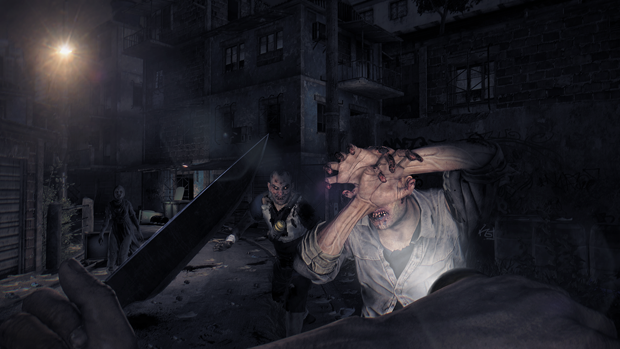
The largest disappointment however come from the way the story comes to a conclusion. Without delving into the realm of spoilers, the game concludes on a mission that feels like it is supposed to be momentous and yet ends up feeling very disconnected from the rest of the storyline save for another plot MacGuffin. Several of the events on that mission make almost no narrative sense and, worst of all, it ends the game on a cliffhanger that, almost literally, screams for a sequel in order to conclude the overall plot, something that is becoming one of the worst sins a developer could make when crafting a story.
Dying Light definitely has problems when it comes to its story and will require a lot of work in order for a second entry to be worth caring about from a narrative perspective. Don’t play Dying Light for the story as there isn’t anything exciting to find here.
Into Darkness
Techland’s latest title definitely does not feel like much of a successor when compared to Dead Island from a storytelling perspective but what it lacks in narrative delivery, it makes up for quite strongly in its gameplay systems. At its core, Dying Light is very much just more Dead Island: you’re going around a large environment exploring, gathering and crafting items and, of course, committing genocide against the undead menace. The comparisons begin to fade thereafter though as Techland has implemented a number of significant new systems as well as improvements to the formula.
The biggest and most welcome improvement over the classic formula is easily the new parkour movement system. A simplified version of the work DICE put into Mirror’s Edge, free running in Dying Light will be your most frequent activity as it is very often the best tool you have on hand to stave off death at the hands of the infected. Parkour movement is quite easy to do once you get used to the control scheme and thanks to a simple look-then-leap mechanic, you’ll find yourself navigating the environment very quickly in no time at all.
Parkour movement is augmented further in Dying Light once you have unlocked the game’s grappling hook. Similar in use to games like Zelda and Just Cause, the grappling hook allows you to, quite literally, climb most of the buildings in the game in a single bound with just the press of a button. The grappling hook also sees use when attempting to descend, allowing you to save yourself from a potential fatal fall so long as you haven’t yet hit terminal velocity. Despite its cool down and the fact that it isn’t very useful against enemies (I had high hopes I could play as Scorpion from Mortal Kombat), the grappling hook is an immensely fun tool the player will quickly come to love.
Combat in Dying Light follows the standard formula for melee-focused FPS titles these days like Skyrim and Condemned in which you have the standard amount set of light, heavy and special attacks whose effectiveness is measured primarily by the strength of the weapon being wielded. Players are given a stamina bar that diminishes after each attempted strike and replenishes when the player does not attack after several seconds. Zombies can take advantage of that brief moment and come in for a quick bite in which players have to mash a button to free themselves. In this regard, the game will no doubt remind some players of the stamina system present in From Software’s Souls series so if you are familiar with them then you should feel right at home.
Despite the strong, albeit repetitive, melee combat to be found in Dying Light, the combat does suffer in one distinct department: gunplay. It wouldn’t be a zombie game if Techland’s latest didn’t include firearms to use against both the living and the dead but, like Dead Island before it, combat with these weapons is rather terrible. The three pistols, two rifles and singular shotgun in the game may be very powerful but they are all terribly clunky to wield and cannot be augmented using the crafting system. Several missions in the game all but require using a gun against enemies but thanks to the hampered mechanics it ends up making these firefights feel very tedious and uninteresting. I found myself only using firearms against human opponents or when absolutely necessary. This is a big problem that Techland needs to address in the future.
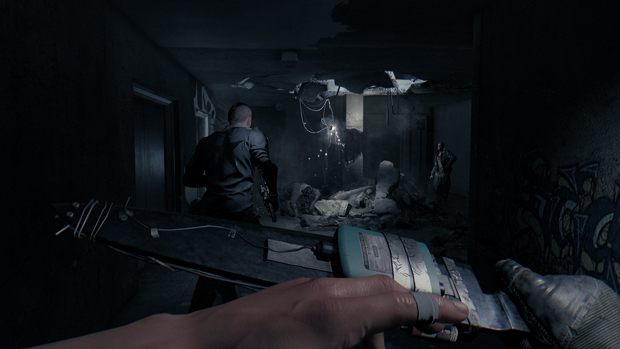
Enemy variety is a mixed bag as well. Just like Dead Island, Dying Light chooses to provide you a variety of zombie types to deal with that are gradually introduced as you progress through the game. And, also like its predecessor, it harps on the same types of infected to deal with that we’ve seen in games like Left 4 Dead. You’ll encounter your typical walkers, your runners, projectile-based spitters that can poison you, ones that will explode, big brutes and more. If you’ve played Techland’s previous effort or Turtlerock’s work you pretty much know what to expect. There are a few exceptions to this rule though. Volatiles, monstrously vicious infected that only come out at night, are your biggest dread for the first six or so hours of the game and are rather well done. Another type does not engage you at all, choosing instead to flee from the player which provides an interesting change of pace but outside of one particular quest line, it serves little purpose. One particular zombie that is introduced late into the game which I won’t spoil will no doubt make you remark on how surprising it is that Techland went that extra mile this time around so kudos to them in that regard.
Dead Island back in 2011 was one of the busiest games of that year thanks to not only the length of the core storyline but also the amount of side content to do. Dying Light repeats this trend by offering several dozen side quests, sets of collectibles and sub-objectives to complete. The most exciting of these comes in the form of air drops, sequences that take place randomly throughout the first half of the game in which cargo planes will fly overhead and drop off crates full of valuable supplies to the survivors. Landing zones are marked by red smoke and, if the player is fast enough, they can get to the site and retrieve the contents unopposed. Less speedy players though may have to contend with bandits, curious zombies or both. It’s very exciting as your controller beings to shake and you hear the distant roar of the plane and they will become the most entertaining deviation from the main plot.
Player progression is built upon a set of three skill trees focusing on the actions you take in the game: survivor, agility and power. Each one levels up separately from one another and is not pooled collectively, nor do they share the earned skill points. Thus, players that focus on parkour and athleticism will earn agility points while those that focus on combat and zombie killing will earn power points respectively. Every action you take, from hitting a zombie to climbing a ledge, earns you points and the game constantly reminds you of that thanks to numbers that appear on screen and slowly fill the XP bars for each skillset that is constantly on the top of your HUD. The Survivor skill tree, the exception to these rules, is earned through quest completion and, unlike the other two, is subject to player fail conditions but more on that in a minute. Based on your playstyle it is quite easy to find yourself quickly leveling up one tree over the other which can be potentially hazardous. Dying Light would have definitely benefited from a shared skill point pool rather than forcing the players to focus on one ability set over the other to become a stronger, faster character but this is a nitpick that many will more than likely not mind.
Within each skill tree you will find an assortment of exciting and exceptionally useful abilities to unlock that make taking risks a more tantalizing prospect. The previously mentioned grappling hook, for example, unlocks halfway through the survivor tree while the laugh-inducing dropkick appears under agility. Naturally, some of the more interesting and useful abilities are unlocked much later in the trees than one would wish for and the more potent ones require unlocking other skills before you can earn the ones you desire. Again, this is where a pool of skill points would allow a player build interesting characters but the game simply doesn’t allow that.
One of the most prominent features Techland chose to include in Dying Light is the much publicized day/night cycle. Players will spend roughly fifty minutes of each hour in daylight completing whatever they please. However, as the day winds down and the sun begins to set, the player begins to receive radio warnings that heed survivors into safe zones. As your watch beeps to warn you of the impending nightfall and you begin to hear inhuman howls in the distance, we are granted access to the nighttime sequence and it is here in which the game changes tone entirely from a zombie killing playground to that of stealth based horror.
Nighttime sequences are an accelerated period of time lasting only ten minutes a piece but for that brief span of time, the game forces you to completely change your in-game discretion regarding combat and exposure. In the night appear Volatiles, a zombie type that are both exceptionally vicious and fast in hunting down and chasing the player in the dark. Your minimap shows their cone of vision ala classic Metal Gear Solid and if you are caught in their gaze for too long, the pursuit begins. At this point, only more leveled up players have the realistic option of engaging the attackers as lower level characters don’t have access to the tools necessary to make staying out at night anything but a hard prospect.
To prevent the player from simply retreating to a safe zone and resting until daylight, Dying Light includes a few measures that make staying out at night more enticing. Beyond just the inclusion of high reward quests that take place only at night, the nighttime sequences double the amount of agility and power XP that you earn. Smart players can quickly level up during this short period by simply forcing a chase to occur and escaping successfully, which yields a massive dump of points to both skill trees. Though this is not encouraged early on in the game, mid-level players will benefit tremendously if they are able to survive the night.

Chase sequences can be a bit tricky to play through though thanks to how traps work. Throughout the game, you can unlock a series of traps and tools to aid in dealing with the infected through the game’s agility skill tree for which some of them are specifically designed to aid the player when being chased. From ultraviolet flares and lamp posts to exploding cars electric floors, there are plenty of tools at your disposal in the event that you need to flee, especially at night. While they can be useful, the way the game informs the player of traps they can utilize is extremely limited in scope, all but forcing you to memorize their locations as they don’t appear on the HUD unless you are within a certain distance of them and, even then, only on your minimap. Assassin’s Creed, by contrast, maintains the trap icon on your minimap at a much greater distance and these trap locations take place that feel natural in location for the direction in which you are fleeing. Dying Light, however, doesn’t afford the player this luxury. In addition, the point of traps are significantly downsized once you get to the second area of the game as you’ll find most of your time being spent bounding off rooftops instead of on the streets below. This is definitely an area Techland needs to take a look at in the future.
Sadly, it is the day/night cycle wherein I find one of the biggest missed opportunities for Dying Light: time management. Throughout the course of the game, the player is constantly given deadlines, timespans and reminders of the importance and necessity of their actions. From radio calls warning of the impending destruction of Harran in just a few days’ time to retrieving flesh from a special zombie type at night for study that needs to arrive in less than a few hours, the game seems determined to press you on your progress. Despite this, the game makes no effort to actually make you proceed in as timely a manner as possible. There are no actual time limits in the game at all! At one point I clearly remember being told that I must complete a mission post haste and only after nearly a week had passed did I finally get around to accomplishing the goal. This is, of course, to say nothing of Antizin being a story gimmick to move the plot along and not also a gameplay opportunity. Allowing players the freedom to do whatever they want, whenever that want is fine in a lot of open world games but in one such as this, stressing the player with time management can actually make for a better game. In my opinion, Dying Light would greatly benefit from an update that includes such a mode.
Fail conditions for Dying Light are curiously worked into the experience. Death, of course, is never the end in a video game but the measures by which the player is punished for such an occurrence encourages the player to engage in a playstyle you wouldn’t expect: suicide runs. Like only a few games before it such as Red Faction Guerrilla, outside of a core store mission, death does not reset the state of the world, instead allowing it to continue on as if you didn’t actually die. Players will respawn nearby, back to full health, and can immediately return to whatever they were doing with all the conditions that existed beforehand still going on. Die at the hand of a few bandits but you managed to kill one or two? Returning to that spot will see that exact scenario still there. It’s a strange design choice to not punish the player like any other game and given that the only penalty the player incurs is the loss of survivor points towards their next skill level, it almost feels like cheating. Though I don’t want to advocate for strict penalties for players, the game would benefit from providing a greater incentive to stay alive as much as possible in the face of dying on purpose to make subsequent lives easier.
Payoff is also an issue I find fault with in Dying Light. Despite several dozen side quests to complete, none of them really have an effect on the delivery of the game’s narrative. Missions in which you are told will dramatically improve the lives of your survivor allies or greatly harm your enemies has no actual bearing on both the story and the gameplay. Side quests, instead, focus on XP rewards and new crafting blueprints for your weapons. One memorable quest forced you to climb to the one of the tallest points in Harran to retrieve some UV bulbs designed to deter Volatile zombies. With the promise of providing better protection from Volatiles around The Tower, you make the difficult climb, retrieve the bulbs, and rush back to the quest-giver at night. Your reward? XP and a blueprint with no world implications for your actions. Often times it just feels like your actions have almost no impact on the world around you and that should not be the case considering a lot of the side content you can accomplish.
Despite these flaws though, Dying Light remains a rather entertaining experience. The game is best played in co-op, of course, but the singleplayer is no slouch by comparison.
The Burning Remains
The second year of the console generation has begun and though we are certain to receive a number of cross-generation titles that are bound to hold back the potential of several games, Techland made the decision just a scant few months ago to make sure that Dying Light would not hampered by a last-gen release, shifting development of the game to PC, PS4 and Xbox One only. Has it helped though? Well, I cannot say for certain considering I don’t believe the game was ever demonstrated on the PS3 or 360 systems but I can suggested that the game can be rather stunning to look at.

Environmental design throughout the game is rather gorgeous and goes a long way toward selling a segmented, rapidly transitioning city. From the slums where you start out to an old colonial section of Harran, you get the sense this time around that this is more of a city than Dead Island’s ever could be. A dynamic weather system is included and really adds to the flavor of the areas you are in. Watching a storm sweep into the area as the clouds darken and the trees blow in the wind, it all looks great. The letdown however comes from the game’s variety of environments. At any high point in the game you can glace off into the distance where you will see a sprawling city filled with skyscrapers as well as tall mountains that would be great to visit. Sadly, those do not exist, as is the fate of many mentioned but viewable locations, the most egregious of which being the Harran stadium where the much-touted Global Games competition was supposed to take place and has been relegated to paid-for DLC. It’s not a bad effort for a first game but Harran would definitely stand for some more places to explore.
Though the public didn’t begin to take notice of Dead Island until after the infamous trailer for it was revealed, Techland first started talking about Dead Island long before any gameplay was revealed. Several years prior to release, the most publicized element of their eventual product was a real-time character deformation system that was just as gruesome looking as one could imagine. Sadly, Dead Island launched without this as it was very performance intensive. Dying Light, however, seems to have incorporated at least some of the deformation system. Combat with zombies will result in some gruesome violence, though it is limited to limb, pelvic and head damage. Still though enemies, before, during and after battle are disgustingly detailed in rather fantastic ways. From the exposed ribcages of a walker making his way toward you to the blood-drenched torso of the zombie you just cleaved in two, Dying Light features some of the most grisly violence to be seen this side of Mortal Kombat and it is glorious.
Audio design is well done… for the most part. Ambient environmental sounds are nicely done and do well to sell the area you are in. The game’s rather interesting soundtrack sticks to the idea of the game being a B horror film by including an entirely synth-focused score that feels ripped straight out of the 80s. The voice work does show some significant improvements over Dead Island and though character’s feelings come across decently, the emotional punch is hampered by the animation of the people on screen. Dying Light, it seems, reserved a lot of its mocap budget for only select cinematics and only in these do we get a feeling for our casts’ emotional canvas.
In short, Techland did a rather great job this time around from a production standpoint. There is, of course, room for improvement but this is a nice demonstration of the potential of the current generation of systems.
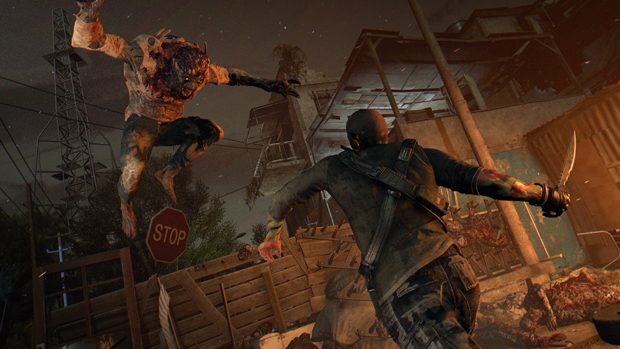
Dying By the Light
The latest game from developer Techland promises a lot of things. They want to tell you that this is a next generation zombie game filled with incredibly brutal combat, an exceptional parkour system and horrific, challenging enemies. Does Dying Light match those descriptions though? Well, mostly.
Dying Light is what Dead Island should have been: a well done open world zombie game with strong combat and a reason to be afraid of the dark. However, it’s riddled with questionable design choices and flaws that hamper the overall experience. If you can look past these inconsistencies and the game’s lacking story, you are in for a rather good time.
Final Score: 7/10
(70-79%: Solid - A solid title that has a few major issues.)
(Please note that the screenshots above were not captured by the reviewer or the staff at 4PlayerNetwork.com. These images are provided to media outlets by the publisher and should not be taken as indicative of the final visual quality of the game. A review copy was provided by the publisher.)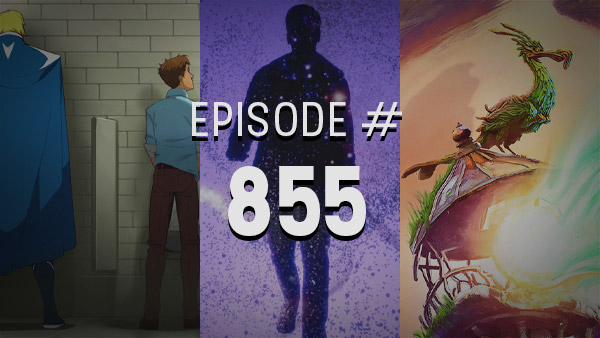
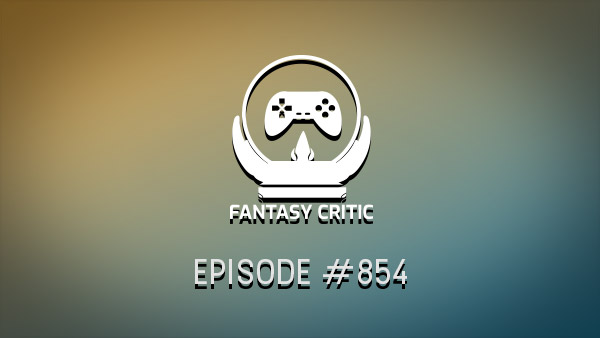
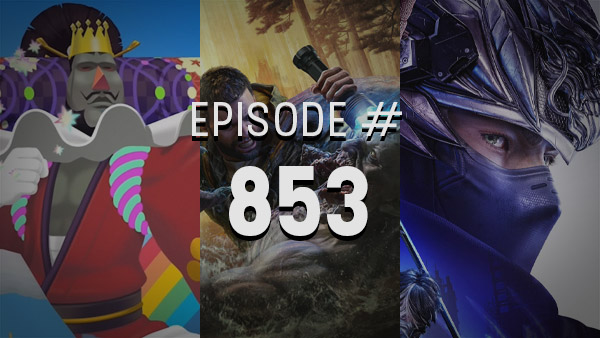
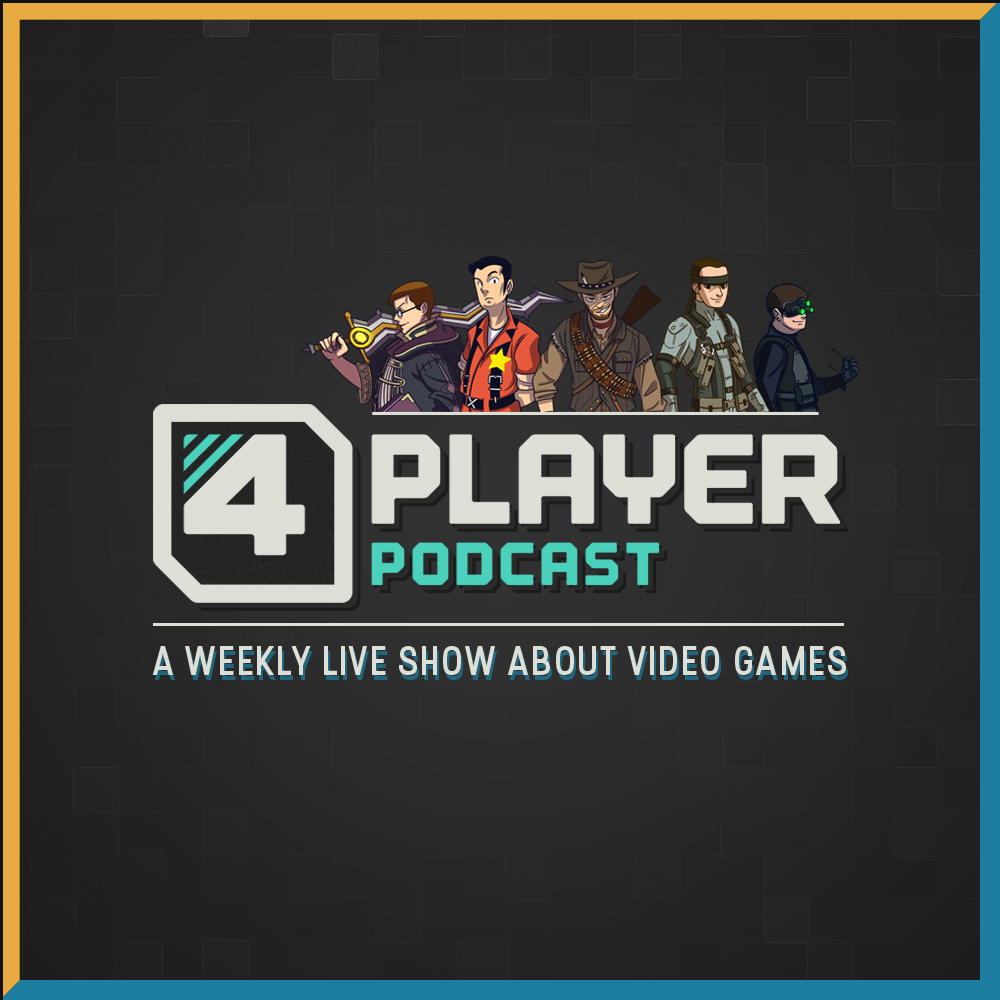
Comments